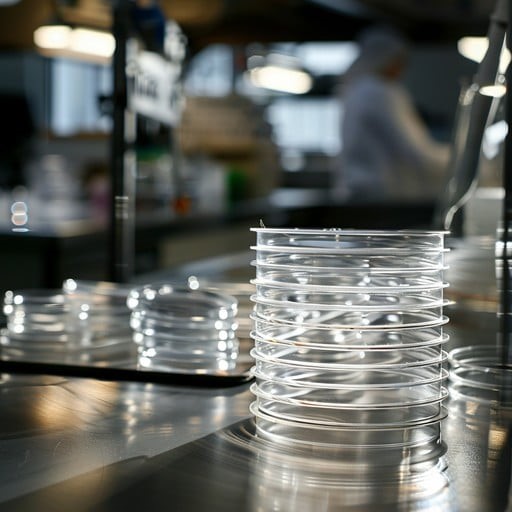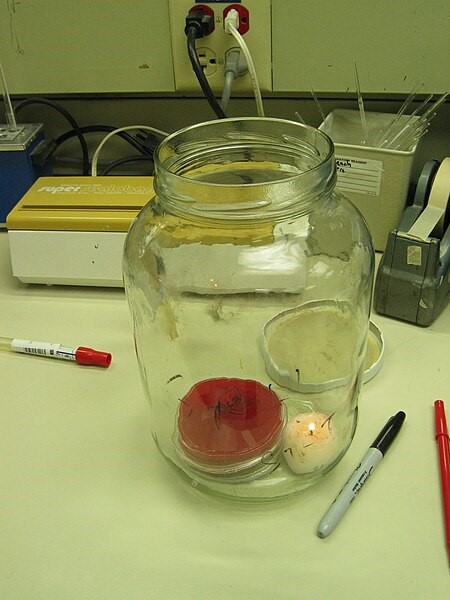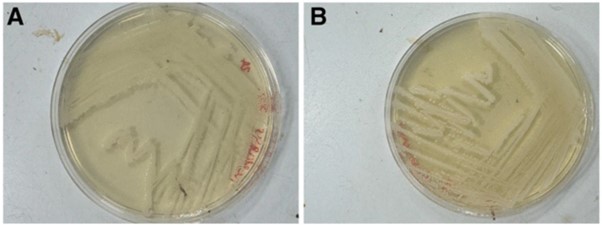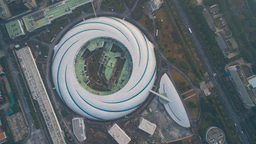Go CO2 free
Published in Microbiology and Protocols & Methods

The growth of all bacteria in a laboratory requires specific environmental conditions, including the nutrients in the media, the temperature, and the atmosphere. Much of the media that we use today was created decades ago to provide the needed nutrients to bacteria of interest.
Temperatures for bacterial growth cultures are generally set by the temperature of the natural environment in which the bacteria are found; for this reason, most pathogenic bacteria are grown at human body temperature, 37°C.
Lastly, bacteria need to have the right atmospheric environment to be able to grow in a lab; this also often mimics the conditions where the bacteria is found in nature. Some bacteria grow fine in the lab in a normal atmosphere. Some bacteria require there to be no oxygen, an anaerobic atmospheric environment like would be found in the human gut. Other bacteria need something different, such as the bacteria that cause gonorrhoea, Neisseria gonorrhoeae; these need enhanced levels of CO2 to be able to grow in the lab.

Due to this requirement for CO2, special incubators are often used to grow N. gonorrhoeae that have regulators to add CO2 from gas tanks into the atmosphere within the incubator. Growth like this requires there to be a readily available supply of CO2 gas and for there to be the special incubators able to use this gas.
There are some alternatives, such as putting the agar plates with the bacteria into sealed jars with a small candle to deplete oxygen and thus raise CO2 levels in the jar. But, these jars then take up additional space in an incubator, where space can be precious.

It would be so much easier, and more readily accessible to remote and resource limited areas, to be able to grow Neisseria gonorrhoeae and bacteria like it on media that eliminates the need for CO2.
This is what we have done in our paper, ‘Improved Neisseria gonorrhoeae culture media without atmospheric CO2.’ In Applied Microbiology and Biotechnology (10.1007/s00253-025-13449-7).
During the pandemic, there were shortages in available CO2 gas cylinders. Even outside of the pandemic, CO2 cylinders run out of gas, ruining experiments and analysis of samples. In remote areas and resource limited areas, there can be issues trying to grow bacteria such as Neisseria gonorrhoeae that have non-standard atmospheric requirements.
Our modified media solves this problem. By simply adding sodium bicarbonate to the three commonly used growth media for these bacteria, we have demonstrated growth of Neisseria gonorrhoeae in normal, standard atmosphere incubators. The GC agar, Chocolate agar, and Thayer Martin agar growth media with sodium bicarbonate are as effective as growth of the bacteria in a CO2 incubator (shown below, A in CO2, B on our media) . This opens up a world of possibilities about where and when these bacteria can be grown in laboratory conditions.

Follow the Topic
-
Applied Microbiology and Biotechnology

This journal focuses on research regarding prokaryotic or eukaryotic cells, relevant enzymes and proteins, and applied genetics and molecular biotechnology.
Related Collections
With Collections, you can get published faster and increase your visibility.
Emerging Applications of Nanoparticles in Biotechnology and Medicine
Applied Microbiology and Biotechnology invites articles on nanoparticles and nanomaterials in biotechnology and medicine. Topics of interest range from nano-enabled diagnostics and drug delivery to enzymatic catalysts in bioreactors and nanoparticles for environmental and health applications. Medical and health-related articles should specifically address diseases caused by bacteria or viruses, or focus on therapeutics produced through biotechnological or enzymatic processes.
Nanoparticles, with their unique size-dependent properties, are transforming biotechnology and medical research. This collection highlights innovative applications of engineered nanoparticles in diagnostics, targeted drug delivery, biosensing, and catalytic bioprocesses. Contributions may include studies of nanoparticle design and functionalization, nanocarrier systems for drug, gene, or enzyme delivery, and nanoparticles as enzyme-immobilization supports to boost bioprocess efficiency. Emphasis is on how these nanoscale materials can improve processes from bio-production to therapeutics, highlighting the impact of nanobiotechnology on health and industrial biotechnology.
We invite contributions on novel nanoparticles and functionalized materials with biotechnological or medical applications. Potential topics include nanoparticle synthesis and engineering for targeted functions, nano-carriers for drug, gene or enzyme delivery, and nanomaterials for biosensors and diagnostics. Studies of nanoparticle applications in bioprocesses (e.g. catalysis in bioreactors, fermentation enhancement) and environmental biotechnology (e.g. pollutant sensing or degradation) are welcome. Works on antimicrobial or antiviral nanomaterials, nano-vaccines, and the safety/toxicology of nanotechnologies are also encouraged.
Topics of interest include, but are not limited to:
• Nanoparticle design and functionalization
• Nanocarriers for targeted drug, gene, or enzyme delivery
• Nano-enabled diagnostics, imaging, and biosensors for microbial and medical applications
• Nanoparticles in bioprocess engineering
• Antimicrobial, antiviral, and nano-vaccine technologies
• Environmental nanoparticle applications (bioremediation, bioenergy) and nanotoxicology studies
This collection supports and amplifies research related to SDG 3 (Good Health and Well-being).
Publishing Model: Open Access
Deadline: Aug 12, 2026
Single Use Technologies in Bioprocessing
The adoption of single-use based processing in biotechnology has transformed the practice by minimizing the risk of cross-contamination, enhancing operational efficiency, and reducing the need for cleaning and sterilization. At the same time, the design diversity of single-use equipment has expanded their application in cell culture and microbial cultivation. Single-use systems offer flexible and cost-effective solutions for upstream and downstream processing. Exploring the benefits of these systems in various applications is vital for optimizing workflows and sustainability. Advancing our knowledge of single-use equipment is essential for identifying best practices and optimizing system design, implementation and integration in hybrid processing. Recent developments include improved design and characterization, scalability and techno-economic assessments. In addition, research into the environmental impact of single-use systems is crucial for promoting sustainable practices in biotechnology, addressing waste management and resource utilization concerns. Future research may lead to next-generation single-use equipment featuring smart technologies like real-time monitoring and data analytics, enhancing process control and product consistency. Innovations in biodegradable materials and recycling methods could also reduce the environmental footprint of single-use systems, aligning biotechnology with global sustainability goals. New areas for the application of single-use equipment require research and demonstration studies to fully explore the benefits, but also identify issues that still need to be resolved. Key topics of interest about single-use bioprocessing include:
- Innovations in bioreactor design and process equipment
- Monitoring and control
- Intensified and continuous processing
- Emerging fields of application in and beyond biopharma
- Materials and quality control
- Best practices for implementation and integration
- Techno-economic and environmental assessments
This Collection supports research related to United Nations Sustainable Development Goals 9: Industry, Innovation & Infrastructure and United Nations Sustainable Development Goals 12: Responsible Consumption & Production .
Publishing Model: Open Access
Deadline: Jan 16, 2026





Please sign in or register for FREE
If you are a registered user on Research Communities by Springer Nature, please sign in